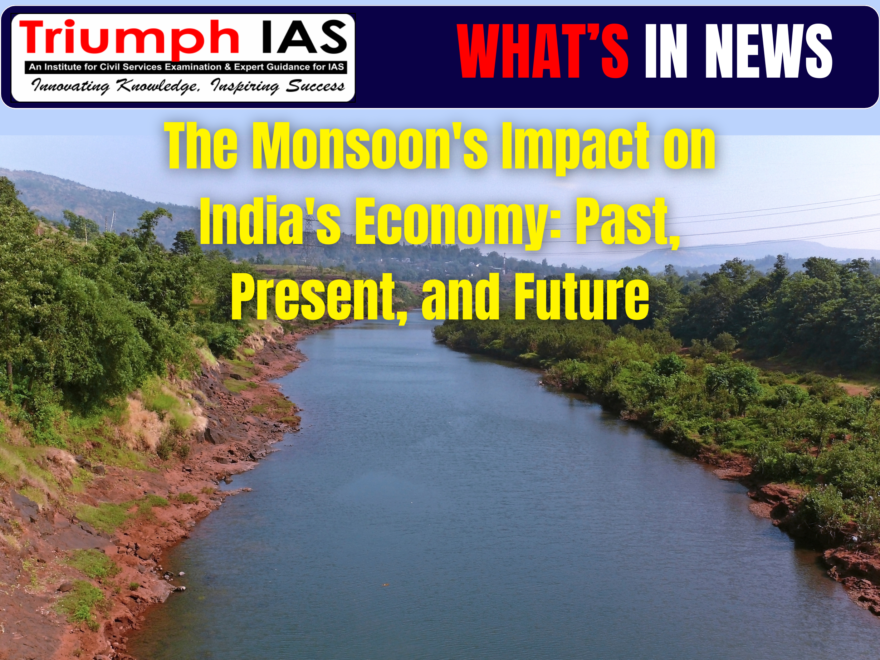The Monsoon’s Impact on India’s Economy: Past, Present, and Future
The Monsoon’s Historical Significance
The monsoon has been a defining feature of the Indian subcontinent for centuries, shaping the lives and livelihoods of its people. During the colonial era, the British recognized the importance of the monsoon to India’s economy and agricultural productivity. A good monsoon season meant bountiful harvests, while poor rainfall often led to famines and economic hardship.
The monsoon’s impact on the economy was so significant that it was said to be India’s “true finance minister”. Pranab Mukherjee, a former President of India and Finance Minister, once remarked that the monsoon season (June-September) was crucial for the country’s economic well-being.
The Monsoon’s Role in Agriculture
Agriculture remains a vital sector of the Indian economy, employing over 60% of the population. A large portion of India’s agricultural land is rain-fed, making it highly dependent on the monsoon. A good monsoon season leads to higher crop yields, increased farm incomes, and greater rural prosperity.
In contrast, poor monsoons can have devastating effects on the agricultural sector. Droughts and irregular rainfall patterns can lead to crop failures, livestock losses, and reduced agricultural productivity. This, in turn, can have ripple effects throughout the economy, impacting employment, consumption, and overall economic growth.
The Monsoon’s Impact on Water Resources
The monsoon is not only crucial for agriculture but also for replenishing India’s water resources. The seasonal rains fill up reservoirs, recharge groundwater aquifers, and sustain rivers and streams. This water is then used for irrigation, drinking, and industrial purposes throughout the year.
During years with below-normal rainfall, water levels in reservoirs and groundwater tables can drop significantly. This can lead to water shortages, particularly during the dry season, and impact various sectors of the economy, including agriculture, industry, and hydropower generation.
The Monsoon’s Effect on Hydropower Generation
The monsoon also plays a vital role in India’s energy sector, particularly in hydropower generation. Hydropower accounts for a significant portion of the country’s electricity supply, and its viability is closely linked to the monsoon’s performance.
During good monsoon years, increased water availability leads to higher hydropower generation, reducing the need for more expensive and polluting fossil fuels. Conversely, poor monsoons can lead to lower hydropower output, necessitating greater reliance on thermal power plants and potentially leading to higher electricity prices.
The Monsoon’s Impact on Government Policies
The monsoon’s influence on the Indian economy is so profound that it has shaped government policies and decision-making. Governments often closely monitor monsoon forecasts and rainfall patterns to assess their potential impact on the economy.
In the event of a poor monsoon, the government may implement measures to mitigate its effects, such as providing relief to farmers, increasing investment in irrigation and water conservation projects, and implementing policies to ensure food security. The government may also adjust its fiscal and monetary policies to stimulate the economy and support affected sectors.
The Monsoon’s Future Challenges
As India continues to develop and modernize, the monsoon’s impact on the economy is evolving. Efforts to drought-proof agriculture through measures such as expanding irrigation networks, using drought-resistant seeds, and implementing precision irrigation techniques have helped cushion the impact of below-normal rainfall.
However, climate change poses a significant challenge to the monsoon’s reliability and predictability. Scientists have observed changes in monsoon patterns, including delayed onsets, erratic rainfall distribution, and increased frequency of extreme weather events. These changes can have severe consequences for India’s economy, particularly in the agricultural and water sectors.
To address these challenges, India must invest in climate-smart agriculture, water conservation, and disaster risk reduction measures. Strengthening early warning systems, improving weather forecasting capabilities, and enhancing coordination between various stakeholders will also be crucial in mitigating the monsoon’s risks and harnessing its benefits.
Conclusion
The monsoon has been a defining feature of the Indian economy for centuries, shaping its agricultural productivity, water resources, and energy sector. While efforts have been made to reduce its impact, the monsoon remains a critical factor in India’s economic well-being.
As India continues to grow and develop, it must find ways to adapt to the changing climate and ensure that the monsoon’s benefits are distributed equitably and sustainably. By investing in resilient infrastructure, promoting sustainable agricultural practices, and fostering innovation, India can harness the monsoon’s potential and build a more prosperous and resilient economy for all its citizens.

Sociology Optional Program for
UPSC CSE 2025 & 2026
Follow us :



